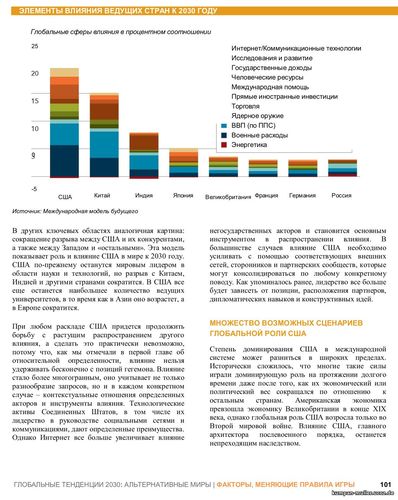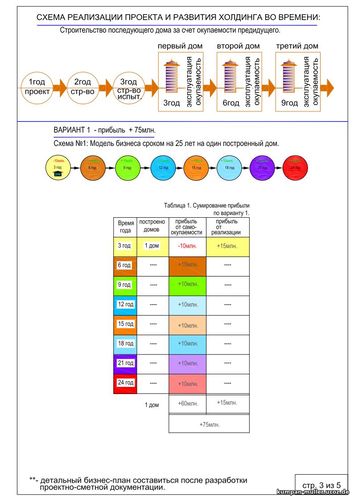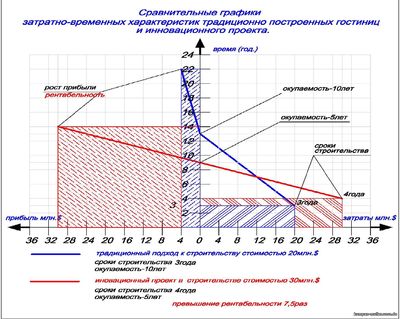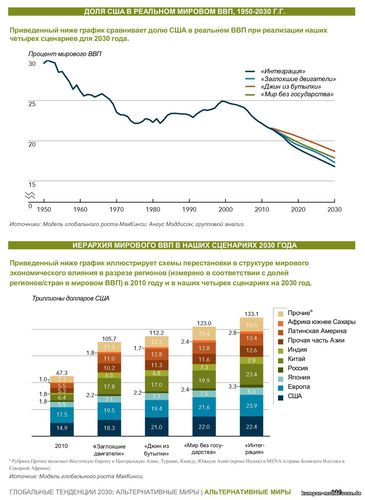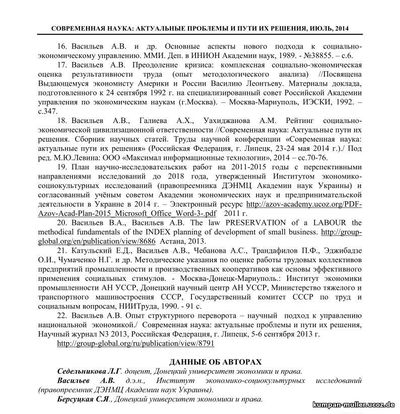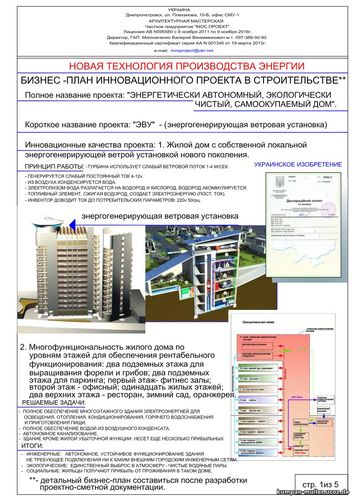Alexander Vasiljev-Muller Dr.econ(PhD)
Publisher
| Главная » Статьи » The philological base of the Engineering epoch /Fedor Melnic-Eduard Gartung-Valery Vasiljev |
Socio-economic substantiation of the pilot option for the construction of environmentally friendly, energy-efficient autonomous safe, integrated into the reproductive process - HOUSE. (Dneprodzerzhinsk, Dnepropetrovsk region) Global urban trends Before talking about the design of the housing of the Future, we will try to determine the main characteristics of this Future, assessed by the world expert community. And it clearly looms after meeting with the "Global Trends 2030" National Council of Exploration, in the preparation of which was attended not only by laboratories of the Department of Energy and NASA, but experts from Silicon Valley and Santa Fe. And they pointed out the following megatrends: 1. There will be no hegemonic power. Power will pass to the networks and coalitions of a multipolar world; 2. The demographic arc of instability will shrink. In “aging” countries, the level of economic growth may decline. Sixty percent of the world's population will live in cities, migration will increase; 3. To a large extent, as the world population grows, the demand for resources will increase. The solution to problems in one area of consumer goods will be related to the level of consumption of other products; 4. Empowerment is accelerating poverty reduction and growth in the world of the middle class; raises the level of education, expands the use of new communication and production technologies, as well as medical services. According to many experts, with whom we agree, the growing multipolarity will lead to an increase in the stability of the world economic order, and governments and state institutions will be able to quickly adapt to changes in the existing system (all events with overcoming the coronavirus pandemic confirm this). Of course, not everything will be very smooth. Thus, inequality will increase significantly, so that some countries will feel like winners, while others will find themselves as losers. Inequality within such countries will increase social tensions. As a result of the redistribution of influence, the United States will cease to be the "world policeman". But this is not unexpected, and the world community will only benefit from such changes, since achieving the Millennium Goals will become a challenge not only for the economies of industrially developed countries, but also a necessity for the countries of the developing world. We are facing the widespread introduction of information technologies of the “smart city”, although today they are not very effective, but by 2030 the cities will be equipped with a semi-integrated IT infrastructure. And also we live in the period of creation of additive manufacturing, which allows the machine to build objects by adding material layer by layer. Thanks to additive technology, many micro-factories can emerge akin to craft workshops before the industrial revolution, but with modern manufacturing capabilities. All of this is taking place against a backdrop of widespread urbanization, where well-managed cities are easier to weather the crisis than poorly managed communities. And experts agree in their assessments that a growing middle class and rapid urbanization will increase pressure on scarce resources - mainly water and food. It follows from all this that the role of local communities and individual districts should increase. In these conditions, an innovative urban planning solution, if only it is truly innovative, will be really demanded by many states.
Is it possible to change the situation with one house, at least in a small region? Yes, it is possible, if we take into account the socio-demographic factors of the populated area, into which we strive to "fit" our innovative project and correctly plan its production output, first of all, to meet the needs of the population of this territory. In fact, the project was born as one of the directions for the implementation of the concept of sustainable development in urban planning and its distinctive feature is the autonomy of the industrial and residential complex and high manufacturability with integrated implementation, which is achieved by optimizing the operation of living space and industrial and technological premises, as well as, according to the authors , due to the use of a power generating wind turbine. Without going into a description of all the advantages of the initial versions of the project of engineer P.I.Poddubny, we can unequivocally state that his HOUSE will not just be autonomous (the latter is achieved due to solar panels alone), but with reliable operation of the wind turbine will provide energy sufficient to provide normal life in another three or four houses (it is not even profitable to put a generator on the top floor of less power). Therefore, firstly, the HOUSE will produce energy, therefore, all calculations of the costs of installing a wind turbine should be made not according to the methods of housing construction, but according to the methods of building industrial facilities (i.e., with a payback coefficient of 0.15). Secondly, all the benefits from fish farming to mushroom production are also calculated by creating small industrial facilities. Namely, based on sales of 60% to 70% of its products to residents of the area where the construction of this innovative HOUSE is planned. We should not proceed from the calculations of an approximate pilot version, but to calculate the pilot version of the project based on the real needs of the population, where we will implement it (!!!). This is somewhat new for all authors of innovations, but, in fact, the only correct direction for preparing for construction and issuing assignments for project documentation. In general, even the number of storeys of a house and the number of apartments should be linked with the production launched during the operation of the HOUSE, i.e. calculate the number of staff, determine the age categories, and then carry out the planning of the necessary housing stock of the ecological, agro-industrial innovative House. Yes, it is not easy, but only this approach meets all the challenges that life poses for us today. It is necessary to go from the needs of people, having a positive impact on the needs that develop a person, then the project will have the support of the majority of specialists, although, of course, with this formulation of the question, it undergoes significant modernization. In general, we are on the verge of a revival of scientific approaches to improving the quality of life in urbanized areas. It does not have to be areas with multi-storey buildings. For us, and this is Ukraine, and the Russian Federation, and the Republic of Belarus, and the Republic of Kazakhstan, urban agglomerations with low-rise buildings are characteristic, which has many advantages over the "group of skyscrapers in the field." If, developing models of the socio-economic development of the region and the social development of collectives of enterprises on the basis of the compiled mathematical models in the 80s for the Azov region, 12 types of cultural and consumer services were taken into account (preschool education, school education, cultural and educational activities, trade, public catering , consumer services, therapeutic and prophylactic services, physical education and sports, administration, utilities, economic maintenance, garages and parking lots), then in the 20s of the XX1 century, thanks to P.I. Poddubny reached the level of small regional production of food and energy resources (the most effective response to the transition to network management methods in the world). Of course, this requires appropriate institutional preparation and it is desirable to carry out socio-economic modeling of the development of territories (the toolkit is available). But as a pilot and in many ways an advertising option, one can “pick up” an urbanized, but rather depressed area, convenient for the implementation of the project, where such a HOUSE will be perceived as a real and unexpected gift. There is experience in calculating experimental social standards, although for the construction of a point object of social infrastructure of a team and a region, in Eastern Europe there is (see Vasiliev A.V. "Methodological problems of improving labor input indicators Social infrastructure", Donetsk: Donbass, 1992.-152 p.) ... In fact, everything is based on time savings calculations with translation and then cost indicators. All this work must be carried out before the issuance of assignments for design documentation in order to determine the most important thing - which production facilities should be put into operation after the construction and settlement of the innovative HOUSE, tk. all of them depend, first of all, on the number of the population served by these HOUSES, and it is also necessary to accurately determine the production nomenclature. Project advantages. The apparent simplicity of the layout and placement of all planned technological and residential premises is not in essence such an obvious and easily perceived design idea. The authors had to thoroughly study all the existing analogues, which are known from the world practice of building autonomous residential modules with technological extensions or modules. They did not go to the full autonomy of residential and industrial areas (in their opinion, this is justified), but decided to place them all under one roof, linking them into a single highly functional industrial and residential complex. The latter is probably relevant in countries with a highly developed culture of individualization of living space, but with the preservation of the entire complex of attributes of a highly socialized community. Ease of solving issues of ensuring energy supply through renewable energy sources (the complexity of the use of wind and solar energy without the creation of specialized separate facilities); Used literature (22 sources) Vice-Chairman of the Azov Department of the Academy of S&E, head. Department of Economic, Ethno-Social Research and Promotion of Investment Projects of the Institute of Eastern Europe, director of Institute for Economic and Sociocultural Research, Executive Director of the closed joint-stock company ANARGUL, Dr (PhD) of Econ, Senior Researcher, Candidate of Technical Sciences, A. V. Vasiljev
Источник: http://www.cic-wsc.org | |
Категория: The philological base of the Engineering epoch /Fedor Melnic-Eduard Gartung-Valery Vasiljev | Добавил: Vasiljev (2020-09-02)
| Автор: A.Vasiljev, P.Poddubnyj  
| |
| Просмотров: 1291 | Теги: | Рейтинг: 5.0/1 | |
| Всего комментариев: 0 | |
Форма входа |
|---|
Категории раздела | |||||||
|---|---|---|---|---|---|---|---|
|
Поиск |
|---|
Наш опрос |
|---|
Статистика |
|---|
Онлайн всего: 1 Гостей: 1 Пользователей: 0 |
Друзья сайта |
|---|
|
|
